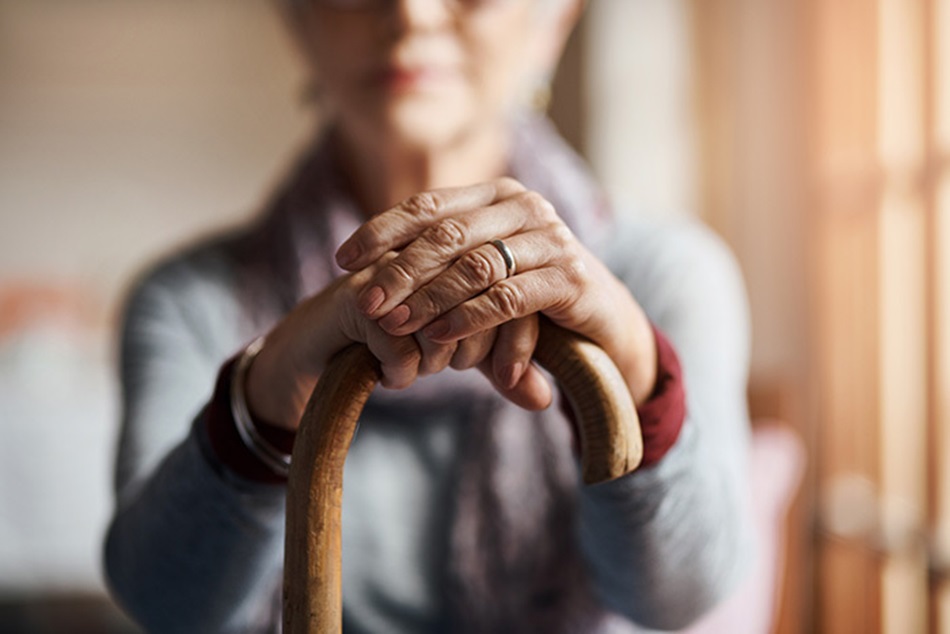Rent Assistance and retirees

Is an increase in Rent Assistance the answer for retirees who don’t own their homes?
Need to know
- The Retirement Income Review (RIR) found that retirees who rent have higher levels of poverty and financial stress than homeowners
- The RIR also found that Commonwealth Rent Assistance is becoming less and less adequate in helping renting retirees have a decent standard of living
- Super Consumers Australia is calling on the government to reform Rent Assistance policy to make sure all Australians can avoid poverty in retirement
When CHOICE surveyed Australians about retirement, one recurring theme was that many who don’t own their own homes were doing it tough.
Geraldine, a retiree who rents, said she relies on public transport being free of charge at certain times, given her income level. “I most certainly cannot afford to own and run a car, and it takes me two hours to travel to my son’s house,” she said.
I feel so ashamed that I cannot afford the petrol, tyres, registration, insurance, servicing or a garage
Geraldine, retired renter, who can’t afford to drive
“I feel so ashamed that I cannot afford the petrol, tyres, registration, insurance, servicing or a garage.”
“My 70s and 80s are looking rather bleak,” reflected another retired renter. “The retirement system needs to be updated to better reflect the massive changes to property ownership over the past decade.”
Housing distress getting worse
Housing for the Aged Action Group (HAAG) works with Australians aged over 50 who are facing homelessness and housing distress. Fiona York, the group’s executive officer, says they’re seeing more and more people facing poverty.
“We’re seeing a lot of older people who are in high degrees of housing distress, paying between 70% and 100% of their income on their rent,” she says. “They’re basically one cheque away from being evicted.”
What is Rent Assistance?
Rent Assistance is a measure designed to help low-income Australians make ends meet.
As we’ve previously reported, many experts and anti-poverty advocates believe this payment should be increased. In this article, we’ll look at how Rent Assistance could be reformed to make sure all Australians, not just homeowners, can enjoy a retirement free of poverty.
Who is eligible for Rent Assistance?
Rent Assistance is a payment made alongside other social security payments you may receive, such as the Age Pension. In other words, it’s a supplementary social security payment – it can’t be the only one you get.
To be eligible, you must be renting privately or living in community housing. There are a number of eligibility criteria, but you can’t generally get Rent Assistance if you’re renting in a government housing authority.
The exact amount of Rent Assistance that recipients get is indexed twice a year to the Consumer Price Index (CPI). The CPI is one way economists measure how much a ‘basket of goods’ costs.

The Retirement Income Review on Rent Assistance
The RIR made clear that Rent Assistance is too low, but experts say the review didn’t go far enough in exploring possible solutions.
“Although Commonwealth Rent Assistance provides additional support to retiree renters, it is far below the level that would bridge the gap in their living standards compared to home owners,” the review says.
Retired renters in income poverty
At Super Consumers Australia, our analysis of the RIR numbers found that of the 422,000 renters in retirement, about 204,000 are in income poverty. Of the latter group, roughly 14,000 would be lifted out of income poverty if the government raised Rent Assistance by 40%.
The RIR itself didn’t answer the question of how much the government would need to increase Rent Assistance to lift a substantial amount of recipients out of poverty.
Nor did the RIR explore whether those retirees living in public housing should get the payment – despite noting that 31% of this group are in income poverty and get no Rent Assistance.
Experts critical of Retirement Income Review
Experts say the RIR could have gone further in discussing how this payment could be changed.
“Rent Assistance is clearly inadequate, and the problem [with the RIR] was around how big the increase needs to be – in my interpretation, you’d need a much bigger increase than they modelled,” says Peter Whiteford, a professor at the Australian National University’s (ANU) Crawford School of Public Policy.
Rent Assistance is clearly inadequate
Professor Peter Whiteford, ANU Crawford School of Public Policy
“The other thing I found strange in that report was that I don’t think [it] had any discussion of increasing social housing as an option, or in addition to increasing Rent Assistance.”
Limited modelling
Rafal Chomik, a senior research fellow at the ARC Centre of Excellence in Population Ageing Research (CEPAR), also says the RIR’s modelling around increasing Rent Assistance is too limited.
“When you’re deciding on policy, you want to see what’s reasonable, what’s affordable and what the cost/benefit is,” he explains.
“It would also be helpful to also see the proportional increase in a person’s income from a higher Commonwealth Rent Assistance because this would be greater at the bottom [of the income distribution]. That would be valuable to make the case [for an increase].
“But most importantly, the review said that other measures were needed without suggesting any.”
Previous reviews of Rent Assistance
The RIR isn’t the first review to point out that Rent Assistance isn’t enough to help those who are retired and renting achieve an adequate standard of living.
Harmer Review
The ‘Harmer Review’, which looked at Australia’s pension system back in 2009, says “there is strong evidence that many pensioners in private rental housing face particularly high costs and have poor outcomes”.
That review also found that the rate of Rent Assistance “has been outstripped by price increases in the rental market”.
Henry Tax Review
The ‘Henry Tax Review’, published in 2010, also recommended that the government raise Rent Assistance “so that [the payment] is sufficient to support access to an adequate level of housing”.
It also recommended that the government develop a way to pay Rent Assistance to public housing tenants, while also scrapping income-linked rent setting in this type of housing.
What’s the fairest way to index Rent Assistance?
The RIR confirmed that Rent Assistance has declined in real terms over the past 30 years because it’s indexed to CPI, which has grown more slowly than rental inflation in that time. In other words, the government has raised Rent Assistance in line with the price of goods, not with the cost of renting, which has risen faster.
Previous reviews found that the payment had become less effectively targeted “as a result of the way in which it has been indexed” and that this impact was “significant”.
The government has raised Rent Assistance in line with the price of goods, not with the cost of renting, which has risen faster
The Henry Tax Review recommended that the payments be indexed to the movements in national rent, not CPI. A range of anti-poverty advocates and economists agree, with some also suggesting that Rent Assistance be linked to another index, such as wages.
The bottom line is that experts and reviews agree that the payment is currently too low and isn’t meeting the needs of retired Australians who don’t own a home.
Is it well-targeted?
Ben Phillips, an associate professor at ANU’s Centre for Social Research and Methods, says: “In terms of ‘bang for your buck’, increasing Rent Assistance would be quite a sensible approach and will decrease the depth of poverty even where it doesn’t shift a person out of poverty.”
‘Refinement’ needed
But the Australian Housing and Urban Research Institute (AHURI) takes a different view. It argues that the government could refine the way the payment is allocated to reduce poverty more effectively.
“One of our recent reports looked at this and basically said about half of it is going to households that aren’t actually in rental stress, but half the households that are in rental stress don’t get it,” says Michael Fotheringham, managing director of AHURI. “That’s a problem.”
“With some refinement of the way it’s allocated, it could be a much more impactful tool.”
The RIR, meanwhile, found that boosting Rent Assistance would help the “people most likely to fall below a minimum standard of living in retirement” and that the payment skews more towards lower-wealth recipients than the Age Pension does.
Would landlords just raise rents if Rent Assistance increased?
If the government gave more money to some renters, would their landlords just raise their rents, wiping out any potential gains for retirees?
Not necessarily, say experts, particularly if only a limited number of renters get the increase.
Phillips says it’s too simple to say landlords would capture any rise in Rent Assistance.
“I don’t think anyone fully knows what the flow-through would be, but most people who rent don’t get Rent Assistance, so I don’t think it’s reasonable to suggest all of it would go to landlords,” he says. “It’s also something renters can spend on anything they want… Overall, it would benefit the low-income renters who receive it.”
Most people who rent don’t get Rent Assistance, so I don’t think it’s reasonable to suggest all of it would go to landlordsAssociate professor
Ben Phillips, ANU
Chomik also casts doubt on the idea that a Rent Assistance increase would only help landlords. “Older people are a very small proportion of the private rental market, so I don’t expect that would have much of an effect,” he says. “Plus, not all of that amount will go to a person’s rent.”
Fotheringham says AHURI studied whether landlords captured a Rental Assistance rise during a similar initiative in New Zealand.
“To some extent, that is the case, but if you’re giving it to a modest proportion of renters, the overall market won’t rise,” he says.

System designed for homeowners
Many commentators have noted that Australia’s retirement income system was built on the assumption that retirees will own their own homes.
Grattan Institute economists found that the Age Pension is sufficient to keep most people out of poverty “provided that they own their own home”. The institute went on to say that Rent Assistance isn’t enough for those who don’t own a home to make up the gap, and that the government must raise it.
The RIR came to the same conclusion: “The additional support Commonwealth Rent Assistance provides is far below the additional housing cost private renters face compared to home owners.”
Home ownership falling for over-65s
Leo Patterson Ross, chief executive officer of Tenants Union NSW, says the gap in housing costs between renters and home owners are often hundreds of dollars a week. The RIR calculated that, on average, Rent Assistance covers just 13% of rent expenses for all renting retirees.
If current trends continue, home ownership for Australians over 65 will drop from 76% (as of 2019) to 57% in 2056
This shortfall is set to worsen because rates of home ownership are declining. Grattan Institute research found that if current trends continue, home ownership for Australians over 65 will drop from 76% (as of 2019) to 57% in 2056.
The trend away from home ownership is even stronger among younger people and low-income earners.
Different levels of government need to work together
Responsibility for housing is split across different levels of government.
The commonwealth government pays Rent Assistance and gives funding to states and territories to improve access to affordable housing. Local government also plays a role by processing most development proposals.
Groups such as HAAG say all three levels of government must work together to help those facing housing distress.
If we don’t have commonwealth and state partnership on improving housing outcomes as a nation, we’re not going to get improvements
Michael Fotheringham, managing director, AHURI
“We think it’s a responsibility of all levels of government, including federal, state and local government,” says HAAG’s Fiona York.
Fotheringham also says it’s “crucial” for the different levels of government to work together, given the overlapping responsibility for social housing.
“If we don’t have commonwealth and state partnership on improving housing outcomes as a nation, we’re not going to get improvements,” he says. “That is a key challenge.”
Rent Assistance just part of the solution
Increasing Rent Assistance would undoubtedly help renting retirees. But there are broader issues too, such as the lack of suitable housing for older Australians and the barriers to buying a home.
We’ve previously looked at whether tweaks to super could help housing affordability and whether the rules should be changed to allow people to buy a home with their super. The expert view was that neither of these measures would improve housing affordability.
Going beyond Rent Assistance
With this in mind, housing advocates have continued to push for changes beyond Rent Assistance, such as increasing social housing stock. HAAG has called for the government to build 500,000 more of these dwellings.
“For the people who receive Rent Assistance, increasing it is a good thing to do and will make a difference,” says Patterson Ross.
“But as a solution to fixing housing policy as a whole, it’s only one part of the puzzle.”
Longer-term solutions
In a working paper, the ANU’s Andrew Podger AO agrees that increasing Rent Assistance would be a big help, but that more low-cost housing is needed too – and that the two measures should complement, not replace, one another.
One advantage of boosting Rent Assistance is that it would have a relatively quick impact in helping retirees. But advocates for renters say policy changes are needed for more long-term solutions.
A retirement free of poverty
Super Consumers Australia director Xavier O’Halloran says we need a solution for the more than 200,000 people who are retired and in poverty right now.
“The evidence is clear that Rent Assistance isn’t covering enough of the cost of rent for retirees,” he says. “As a result, people are living in poverty. This isn’t a group that can just return to the workforce to cover their rent.
The evidence is clear that Rent Assistance isn’t covering enough of the cost of rent for retirees. As a result, people are living in poverty
Xavier O’Halloran, director, Super Consumers Australia
“The payment needs to be more, and it needs to be based on need.
“Boosting this payment isn’t a complete solution to the growing problem of housing affordability, and the state and local governments will also have a crucial role to play in improving housing affordability for older Australians.
“But increasing Rent Assistance would be a major step towards a retirement system which allows all Australians to avoid poverty.”
This content was produced by Super Consumers Australia which is an independent, nonprofit consumer organisation partnering with CHOICE to advance and protect the interests of people in the Australian superannuation system.


